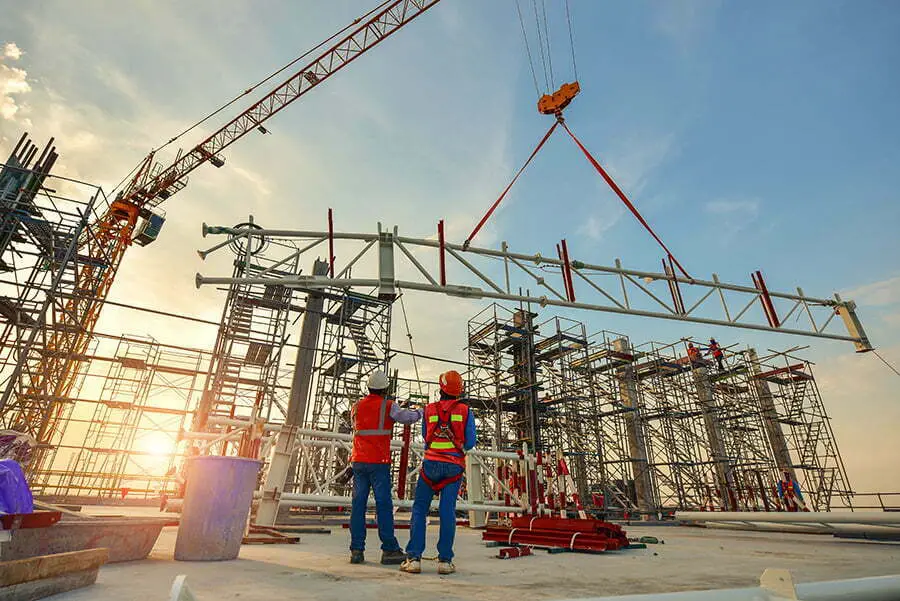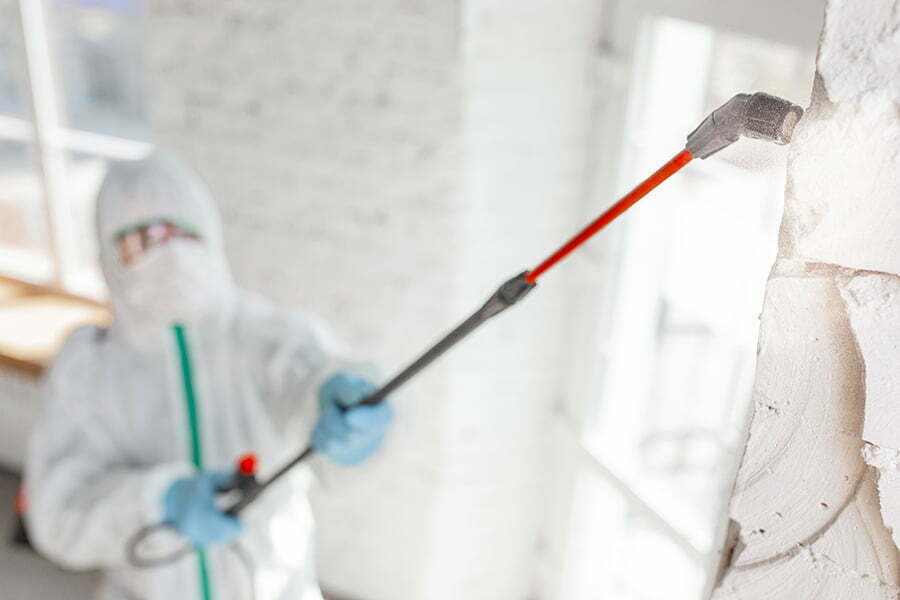Polymer-based building materials with mold resistance and antimicrobial properties help to protect against the growth of mold and bacteria. This makes them highly beneficial for use in a variety of applications.
Polymers have many uses in building materials, from insulation to structural components. One of the key advantages of using polymers is their ability to resist mold and microbes. This causes serious damage to buildings over time.
This blog post explores how polymers’ mold resistance and antimicrobial properties affect their use in building materials. It also talks about the benefits and drawbacks associated with these characteristics.
Polymers with mold resistance and antimicrobial properties are used in building materials to help prevent mold growth. This can help extend the life of a structure by reducing damage caused by these organisms.
Using polymers in building materials can reduce health risks associated with exposure to mold and other microbes.
Key takeaways:
- Polymer-based building materials resist mold and protect against bacteria.
- Using polymers in construction reduces health risks from mold exposure.
- Polymers with mold resistance extend the lifespan of structures.
- Antimicrobial properties in polymers prevent the spread of bacteria.
- Evaluation and safety standards are crucial when using antimicrobial polymers.
Building Materials

Building materials are the components used to construct a structure, such as walls, floors, and roofs. These materials can be made from various substances, including wood, metal, concrete, and plastic.
Polymers are synthetic materials developed recently for building materials due to their unique properties. They are resistant to mold growth and possess antimicrobial prop, making them ideal for use in areas where moisture or hygiene is important.
The mold resistance of polymers helps prevent the growth of fungi on surfaces, while the antimicrobial properties help reduce the spread of bacteria and other microorganisms. This makes them an excellent choice for use in bathrooms, kitchens, hospitals, schools, and other places where cleanliness is essential.
Mold Resistance

Mold resistance is an important factor to consider when selecting building materials. Polymers are a type of material that can be used in construction and have the ability to resist mold growth.
This is due to their chemical composition, which makes them resistant to moisture and other environmental factors that can cause mold growth. The polymer’s ability to resist mold also helps protect the structure from damage caused by fungi, such as rot or decay.
Polymers are often treated with antimicrobial agents that further inhibit the growth of mold and other microorganisms on their surface. This helps ensure that the building materials remain safe and free from contamination over time.
Antimicrobial Properties
Antimicrobial properties refer to the ability of a material to resist or inhibit the growth of microorganisms such as bacteria, fungi, and viruses. Polymers used in building materials can be treated with antimicrobial agents that help prevent the development and growth of these organisms on surfaces.
This is beneficial because it helps reduce the risk of mold and mildew buildup, which can cause health problems for people living in buildings made from these materials. It helps protect against other types of microbial contamination that could lead to structural damage over time.
Evaluating the Performance of Mold Resistant Polymers for Construction
When it comes to using mold resistant polymers in construction, evaluating their performance is crucial. Builders and manufacturers need to ensure that these materials effectively prevent the growth of mold and mildew in various building applications.
One important aspect of evaluating the performance of mold resistant polymers is testing their resistance against different types of molds. This involves subjecting the materials to controlled laboratory conditions where they are exposed to specific strains of molds commonly found in buildings.
By doing so, researchers can determine how well these polymers inhibit or prevent mold growth.
Another factor that needs consideration is the durability and longevity of these materials under real-world conditions. Mold resistant polymers should be able to withstand exposure to moisture, temperature fluctuations, UV radiation, and other environmental factors without losing their effectiveness over time.
Assessing how easy it is for builders or contractors to work with these materials during installation plays a significant role in determining their overall performance. Factors such as ease-of-use, compatibility with existing construction practices or techniques should be taken into account when selecting suitable options for specific projects.
Advancements in Antimicrobial Polymers in Building Industries
These polymers are specifically designed to inhibit the growth of bacteria, fungi, and other microorganisms on surfaces, making them ideal for use in various construction applications.
One significant advancement is the development of polymer additives that possess inherent antimicrobial properties. These additives are incorporated into the polymer matrix during manufacturing, ensuring long-lasting protection against microbial colonization.
This eliminates the need for additional surface treatments or coatings.
Another notable advancement is the introduction of antimicrobial coatings that can be applied to existing building materials. These coatings create a protective barrier on surfaces such as walls, floors, and countertops, preventing bacterial growth and reducing cross-contamination risks.
Furthermore, researchers have been exploring nanotechnology-based approaches to enhance antimicrobial properties in polymers used for construction purposes. By incorporating nanoparticles with potent antibacterial or antifungal characteristics into polymeric matrices at a molecular level, these advanced materials exhibit superior resistance against microbial colonization compared to traditional options.
The continuous research efforts dedicated to improving antimicrobial polymers have resulted in more durable and efficient products over time. Manufacturers now offer a wide range of options tailored specifically for different construction needs – from interior finishes like paints and sealants to exterior cladding systems – all aimed at maintaining cleaner environments while ensuring structural integrity.
Implementing Safety Standards for Using Antimicrobial Polymers in Construction
As these materials are designed to inhibit the growth of microorganisms, including bacteria and fungi, it is crucial to follow proper guidelines and standards during their application.
One key aspect of implementing safety standards involves understanding the potential health risks associated with antimicrobial polymers. While they can effectively prevent microbial growth on surfaces, certain types may release chemicals that could be harmful if not used correctly or if exposed over an extended period.
Therefore, it is essential to carefully select antimicrobial polymers that have been thoroughly tested and approved for use in construction applications.
Another important consideration when working with these materials is proper handling and installation procedures. Following manufacturer instructions regarding storage conditions, mixing ratios (if applicable), curing times (if required), as well as any necessary personal protective equipment (PPE) will help minimize potential risks during the construction process.
Furthermore, regular maintenance practices should be established after incorporating antimicrobial polymer-based building materials into a structure. This includes routine inspections for signs of wear or damage that could compromise their effectiveness or potentially release harmful substances into the environment.
The Environmental Impact of Using Antimicrobial Polymers
It is important to consider the environmental impact associated with their use.
One concern is that antimicrobial polymers can potentially leach into the environment over time. When these polymers are used in building materials such as flooring or coatings, there is a possibility that they may release antimicrobial agents into water sources or soil through runoff or degradation.
This could have unintended consequences on ecosystems and aquatic life.
Some antimicrobial agents used in these polymers may persist in the environment for long periods of time without breaking down naturally. This raises concerns about bioaccumulation and potential harm to organisms higher up in food chains.
To mitigate these environmental impacts, it is crucial for manufacturers and builders to carefully select antimicrobial polymer products that have been tested for safety and effectiveness while minimizing any negative effects on ecosystems. Furthermore, proper disposal methods should be followed at end-of-life stages of buildings containing such materials.
Potential Health Risks and Challenges in the Use of Mold-Resistant Polymers
While these polymers are designed to inhibit the growth of mold and prevent microbial contamination, there are certain factors that need careful attention.
One challenge is ensuring that the antimicrobial properties of these polymers do not have any adverse effects on human health. Some antimicrobial agents used in these materials may release volatile organic compounds (VOCs) or other potentially harmful substances into the air over time.
It is crucial for manufacturers to thoroughly test and evaluate their products for any potential negative impacts on indoor air quality.
Another consideration is maintaining a balance between preventing mold growth and preserving a healthy microbiome within our living spaces. Mold-resistant polymers work by inhibiting microbial activity, but they can also disrupt beneficial microorganisms present in our environment.
Striking this balance requires careful formulation of polymer additives that target harmful microbes while sparing those essential for ecological equilibrium.
Furthermore, there may be concerns regarding long-term durability and stability of these materials when exposed to various environmental conditions such as UV radiation or moisture fluctuations. Proper installation techniques must be followed along with regular maintenance practices to ensure optimal performance throughout the lifespan of buildings constructed using mold-resistant polymers.
To address these challenges effectively, collaboration among researchers, manufacturers, regulatory bodies,and construction professionals becomes vital.The developmentof comprehensive guidelinesand standardsforthe safe useofmold-resistantspolymersisthereforeessential.This will help mitigatepotentialhealthriskswhileensuringthattheseinnovativebuildingmaterialscontinueprovidingahealthyanddurableenvironmentforoccupants.
FAQ
What are the properties of antimicrobial polymers?
Antimicrobial polymers display two crucial properties: a cationic charge, which stimulates interaction with the microbial cell wall, and hydrophobicity.
What makes something antimicrobial?
An item becomes antimicrobial when it is treated with or incorporates chemicals designed to kill or hinder the growth of microbes.
How are antimicrobial polymers integrated into construction materials?
Antimicrobial polymers are integrated into construction materials by infusing or coating the materials surface with these polymers, which are designed to continually release antimicrobial agents to inhibit the growth of bacteria, fungi, and molds.
What are the potential health and environmental impacts of using antimicrobial polymers in construction?
The potential health and environmental impacts of using antimicrobial polymers in construction include potential antimicrobial resistance in microbes, harmful effects on non-target organisms, and environmental pollution due to non-biodegradability.
What recent advancements have been made in the field of antimicrobial polymers for building industries?
Recent advancements in the field of antimicrobial polymers for building industries include the development of silver nanoparticle-embedded polymers and nitrogen-rich polymers that exhibit potent antimicrobial properties and enhance building durability.
Recap




